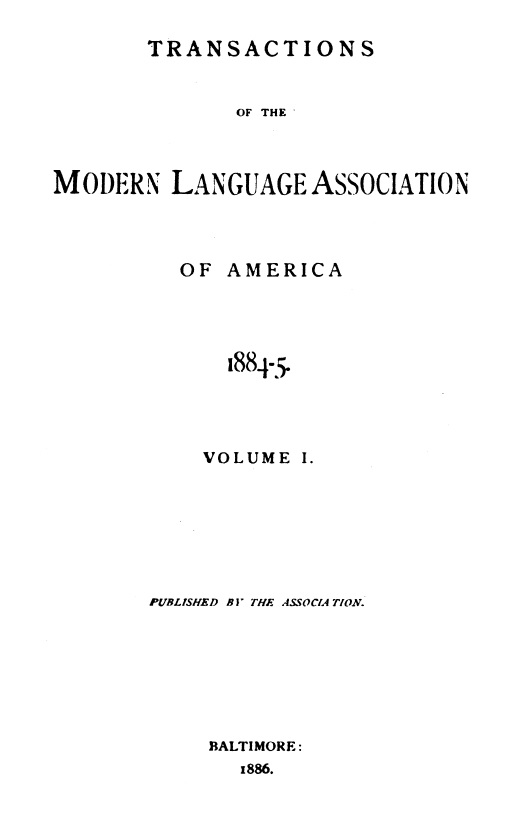No CrossRef data available.
Article contents
The Collective Singular in Spanish
Published online by Cambridge University Press: 11 February 2021
Extract
The part of grammar which, with the exception of French and to a certain degree of Italian, has been almost entirely neglected in the study of the Neo-Latin idioms, is, we need not hesitate to say, syntax; for the more or less extensive treatises which we find devoted to it in the available grammars, intended mostly to serve practical purposes, cannot meet the expectations of the scholar nor yet always those of the practical learner. A scientific statement of the syntactical forms of the Spanish language, for instance, has as yet not been attempted, unless the Diccionario de construccion y régimen de la lengua castellana, por D. Rufius José. Cuervo, the first number of which, recently published at Paris, we have not been able as yet to obtoin, prove to be such an one. The numerous practical grammars intended to teach modern Spanish almost uniformly base their rules of syntax on the language of Cervantes, thus confusing two widely different epochs and presenting constructions and terms which are now obsolete. Even Paul Foerster's excellent “Spanische Sprachlehre” is not always reliable in stating the age or the extent of use of a construction. Thus, to give only one instance, in treating the uses of the preposition de with the infinitive, § 486, 27, he represents the construction: ‘hacerse de rogar’ as unusual, and leaves one to infer that it occurs only in Don Quijote, whereas it is the usual construction, found again ‘Galatea,‘ 1. vi : La mal camarera tan comedida como hermosa, sin hacerse de rogar, cantó de esta suerte; used two centuries and a half before Cervantes by Don Juan Manuel in the Conde Lucanor, cx. xvii:
En lo que tu pro pudieres fallar,
Nunca te fagas mucho de rogar;
again by Luna in the Lazarillo de Tormes, p. ii, c. 11: Hícelo, sin hacerme de rogar; and so on, up to the present time, where we find it, for instance, in the ‘Escenas Matritenses’ by Mesonero Romanos: La vieja se hacia de rogar; in Fernan Caballero: El no se hizo de rogar (Familia de Alvareda, p. 21, Brockhaus ed.). Considering this neglected state of Spanish syntax and the vast material waiting for a systematic arrangement, we need not be surprised that many of its peculiarities should have been insufficiently treated, while others have been entirely overlooked even by the master of Romance Philology, Friedrich Diez, and those following in his wake. One of the constructions not mentioned in Diez' Comparative Romance Grammar, nor in any of the special grammars of the several Neo-Latin idioms, though in Spanish at least it is frequent enough to thrust inself upon one's notice, is the use of the singular of concrete nouns for the plural in a collective sense, commonly termed the collective singular. It is the purpose of this paper to call attention to the existence of this construction in the Romance languages, and particularly in Spanish. As neither the time nor the material at hand permitted us to extend our researches over the whole of Spanish literature, ancient and modern, we had to content ourselves for the present with the study of the most important works of the former, inclusive of the time of Cervantes, using for the modern language some of the better novelists. We regret especially not having been able to adduce late and mediæval Latin for our present presentation of the subject, but hope to do so in the near future.
- Type
- Research Article
- Information
- Transactions of the Modern Language Association of America , Volume 1: Transactions 1884-1885 , 1885 , pp. 133 - 148
- Copyright
- Copyright © Modern Language Association of America, 1885


